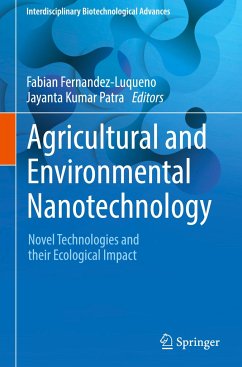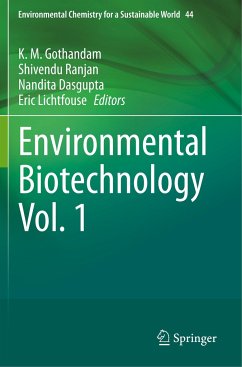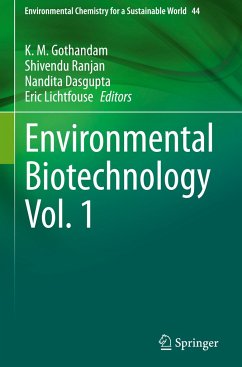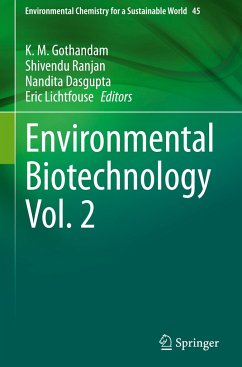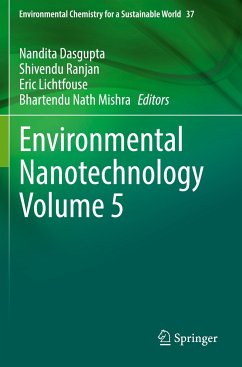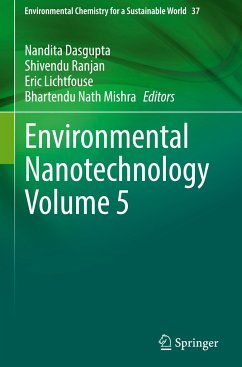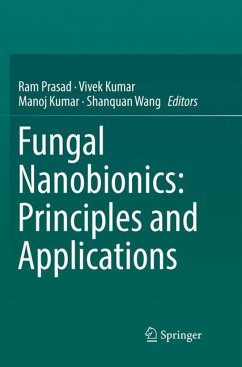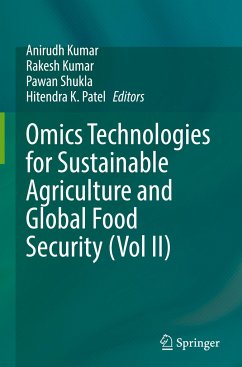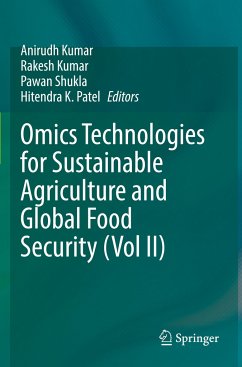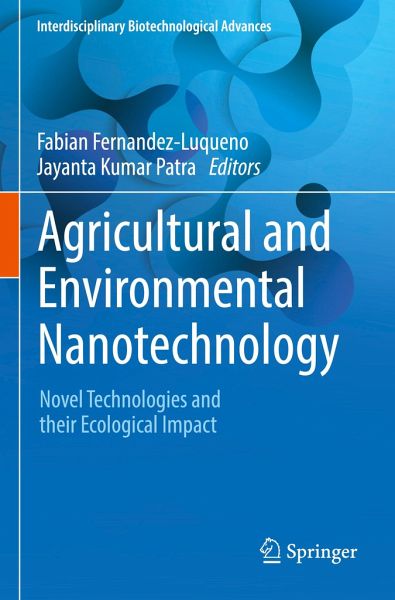
Agricultural and Environmental Nanotechnology
Novel Technologies and their Ecological Impact
Herausgegeben: Fernandez-Luqueno, Fabian; Patra, Jayanta Kumar
Versandkostenfrei!
Versandfertig in 1-2 Wochen
191,99 €
inkl. MwSt.

PAYBACK Punkte
96 °P sammeln!
This book highlights the best practices regarding nanoscience and nanotechnology for agriculture and environmental sectors to shape sustainable development thought to improve the quality and quantity of the agriculture products and to decrease the collateral effect of nanotechnology in the ecosystems. Besides, leading nanotechnologies are showed and discussed to guarantee their proper management in lands and ecosystems. Therefore, nanotechnologies such as agronanobiotechnology, nanofertilization, pest control, magnetofection for plant breeding, plant molecular farming, OMICs technologies, phyt...
This book highlights the best practices regarding nanoscience and nanotechnology for agriculture and environmental sectors to shape sustainable development thought to improve the quality and quantity of the agriculture products and to decrease the collateral effect of nanotechnology in the ecosystems. Besides, leading nanotechnologies are showed and discussed to guarantee their proper management in lands and ecosystems. Therefore, nanotechnologies such as agronanobiotechnology, nanofertilization, pest control, magnetofection for plant breeding, plant molecular farming, OMICs technologies, phytonanotechnology, nanoremediation, etc. are described in five sections and 21 chapters. Undoubtedly it is an ideal and updated book for undergraduate or postgraduate students, and scientists or researchers involved in nanoscience, nanotechnology, crop production, and remediation technologies as well as for those researchers that solving technical problems regarding the crop management and thehumanand environmental health without hampering the pursuit of sustainable development goals.



